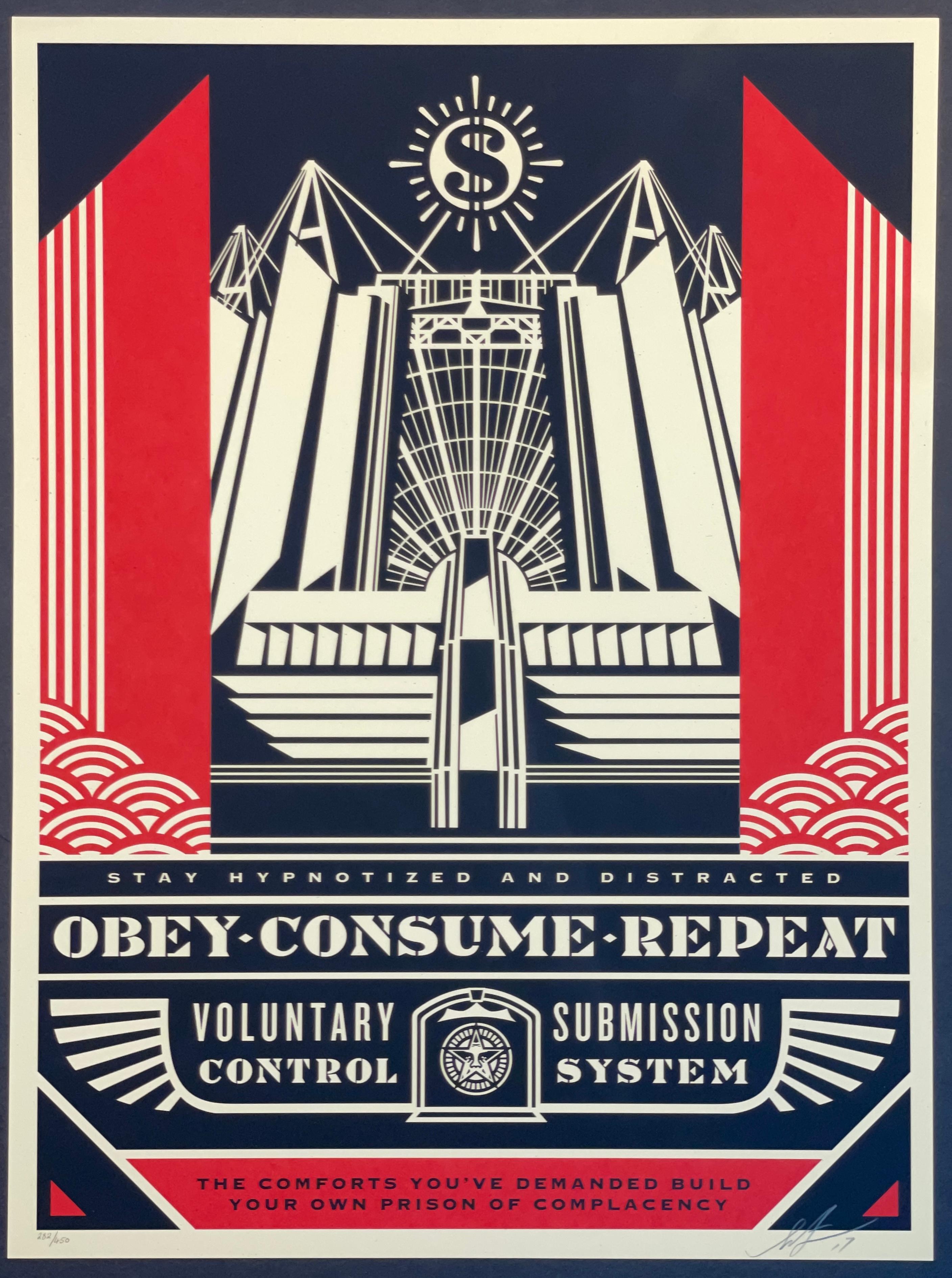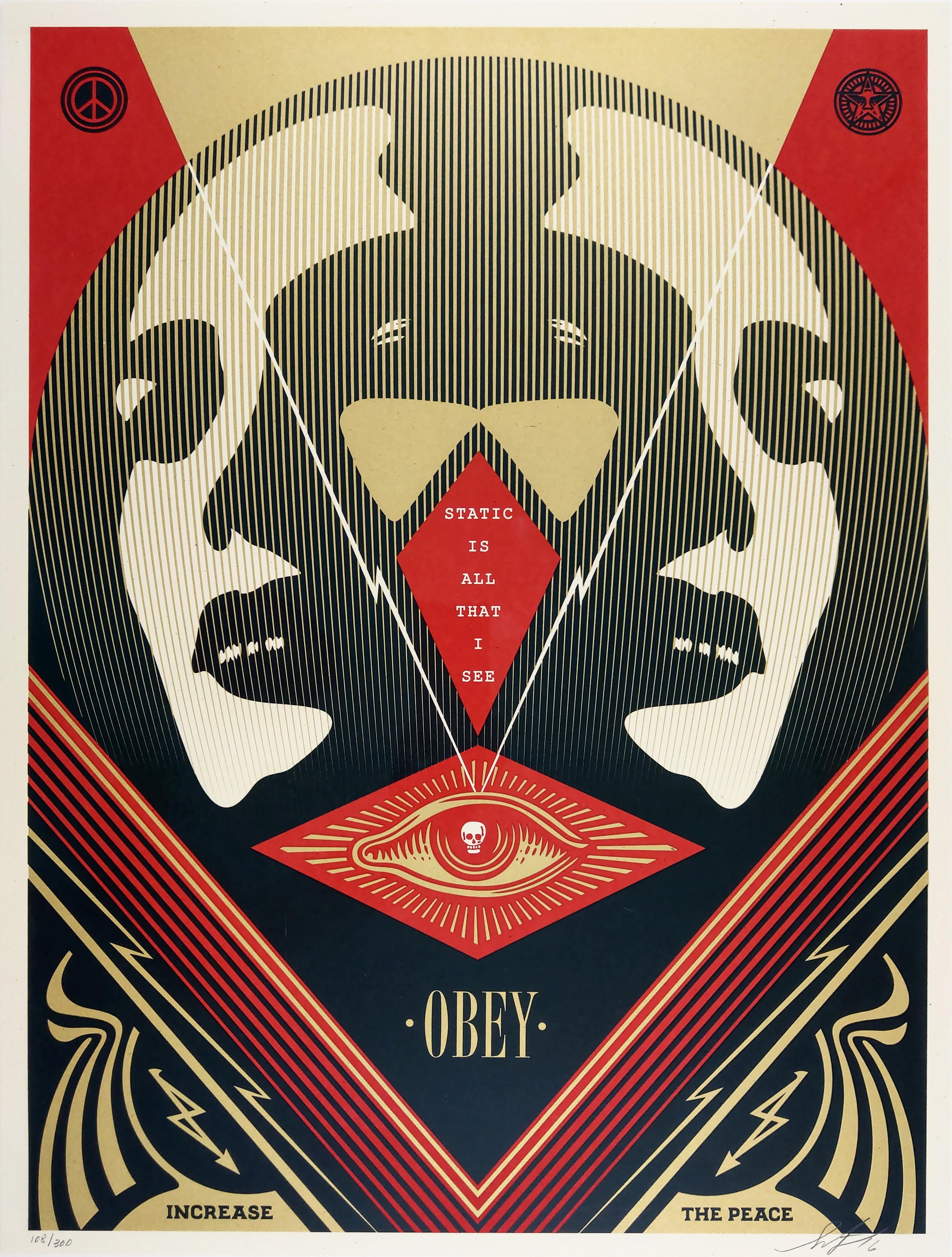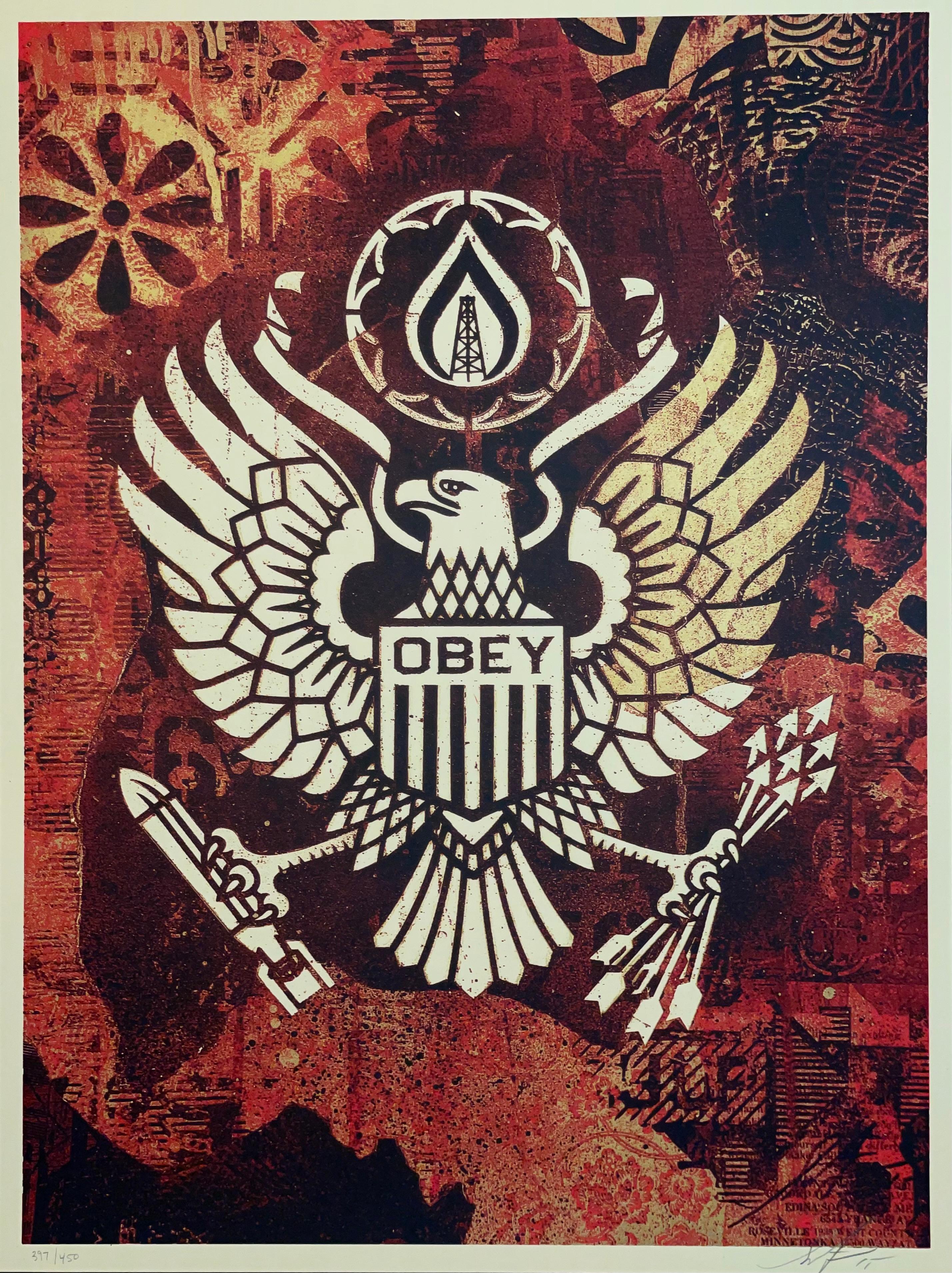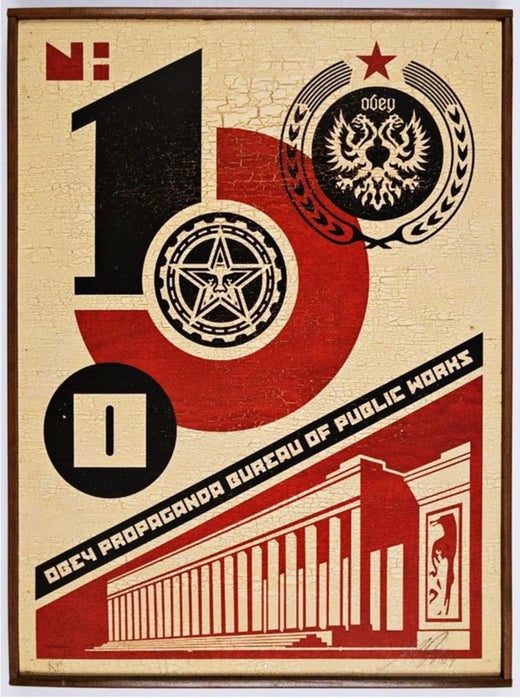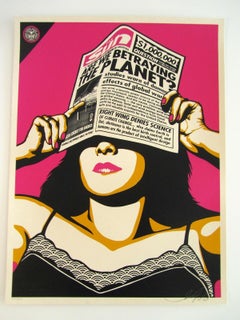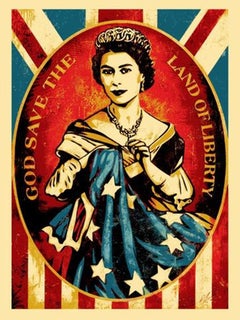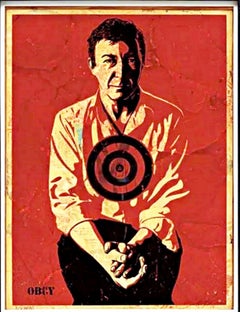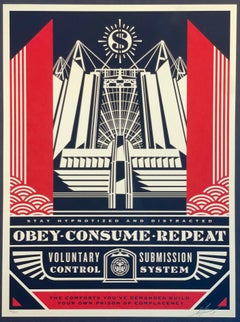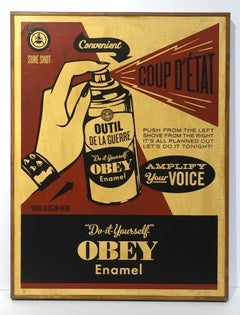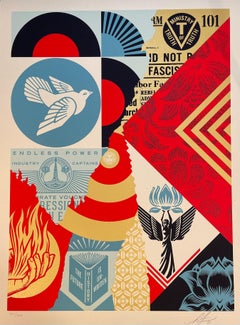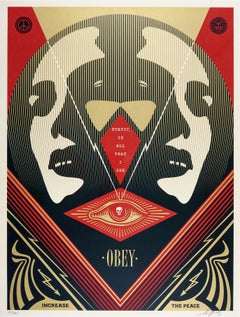Shepard FaireyShepard Fairey, Bureau of Public Works Twice Signed work on wood panel unique AP2004
2004
About the Item
- Creator:Shepard Fairey (1970, American)
- Creation Year:2004
- Dimensions:Height: 24 in (60.96 cm)Width: 18 in (45.72 cm)Depth: 1.5 in (3.81 cm)
- Medium:
- Movement & Style:
- Period:
- Condition:In excellent condition. Any antique appearance and look of craquelure of the paint is inherent to the work and a deliberate visual effect.
- Gallery Location:New York, NY
- Reference Number:1stDibs: LU1745214967572
Shepard Fairey
Expanding on the legacies of artists such as Keith Haring and Andy Warhol, Shepard Fairey’s practice disrupts the distinction between fine and commercial art.
A major artist of the street art movement, Fairey rose to prominence in the early 1990s through the dispersion of prints, posters, stickers and murals, related to his Obey Giant campaign, which yielded an international cultural phenomenon. Fairey’s iconic poster of President Barack Obama was adopted as the official emblem associated with the presidential campaign and encapsulates a number of recurring concerns in the artist’s work, including propaganda, portraiture and political power.
Find a collection of Shepard Fairey original art on 1stDibs.
- ShippingRetrieving quote...Shipping from: New York, NY
- Return Policy
More From This Seller
View All2010s Pop Art Portrait Prints
Wood Panel, Screen
Early 2000s Pop Art Abstract Prints
Screen, Pencil
2010s Pop Art Portrait Prints
Screen
2010s Pop Art Portrait Paintings
Mixed Media, Acrylic, Screen
Early 2000s Pop Art Portrait Prints
Screen, Pencil
1970s Pop Art Portrait Prints
Offset
You May Also Like
2010s Contemporary Landscape Prints
Screen
Early 2000s Contemporary Prints and Multiples
Screen
2010s Street Art Portrait Prints
Screen
2010s Street Art Prints and Multiples
Screen
2010s Street Art Figurative Prints
Screen
2010s Street Art Animal Prints
Screen
